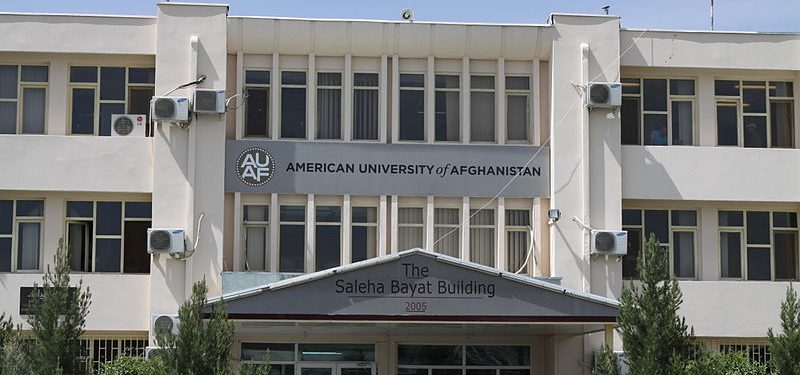The future of the American University of Afghanistan has come into question after a report revealed it has been unable to secure assurances for continued funding from The US Agency for International Development.
News and business analysis for Professionals in International Education
Have some pie!
Afghanistan: AUAF faces closure
 AUAF is battling for continued funding from the US. Photo: USAID Afghanistan.
AUAF is battling for continued funding from the US. Photo: USAID Afghanistan. According to CNN, USAID had a close-out meeting with university personnel at the US Embassy in Kabul in December 2019 and AUAF may have to close its doors in May of this year.
“Recent news reports have correctly reported that AUAF is dependent on US government funding”
The AUAF relies on USAID for more than 60% of its budget and is dependent upon the agency’s financial backing.
AUAF’s president, David S. Sedney, said that he is “working hard to ensure continued funding” for the university, although he did not go as far as saying the university would not close.
“Recent news reports have raised concerns that AUAF may be preparing to close its doors,” he said in a statement.
“When the AUAF Board of Trustees appointed me as president… I took on that responsibility, and that privilege, with a wholehearted commitment to see AUAF not only thrive but grow.
“Recent news reports have correctly reported that AUAF is dependent on US government funding. That was true when the University opened in 2006 and continues to be true today,” he added.
However, this is not the first time that AUAF has faced closure. In 2016 an attack by the Taliban at the university saw several people killed and dozens injured.
Sedney said that US government funding was necessarily increased in 2017 to allow for heightened security that enabled AUAF to reopen in March of that year, following the attack eight months earlier.
“As long as sustainable peace is still an aspirational goal, rather than a reality in Afghanistan, the need for funding to maintain a strong security environment will also remain a reality,” Sedney continued.
“I, along with the AUAF board and administration, am actively working to ensure that the funding for AUAF operations, security, academic programs (including new programs) is in place for 2020 and beyond.”
Early in 2019 the Special Inspector General for Afghanistan Reconstruction – the US government’s leading oversight authority on Afghanistan reconstruction – published the results of an investigation into AUAF and its use of US money.
SIGAR and USAID OIG investigators claimed that AUAF records showed the institution had lost more than US$63 million since 2012, depended on US aid for 86% of its funding, and as of February 2018, had the money for only another month’s expenses.
To avoid a failure of the university, USAID extended the 2013 cooperative agreement and raised its total value to $72.8 million, enough to keep the AUAF open through at least May 2019.
Last March, a report by The New York Times stated that Sedney signed an administrative agreement that saw the university pledge to undertake reforms in budgeting, management and oversight as a condition of future government funding.
However, a spokesperson from AUAF told The PIE that SIGAR’s report contained misleading information and that the “millions” are fully accounted for in the monthly, quarterly and annual reports that the university submits to the US Government.
The spokesperson claimed that the reports are fully accepted by the US Government agencies which give the university grants.
AUAF released a statement last year, stating that the report by The New York Times, which reported that the university was under scrutiny for “missing millions”, painted an “inaccurate and misleading picture of the University”.
“The current cooperative agreement between the USAID and the AUAF began on August 31, 2013, and will end on May 31, 2020,” a USAID spokesperson told The PIE.
The spokesperson said that any future USAID funding for AUAF is “subject to a competitive process” and contingent upon the university’s continued compliance with certain terms that AUAF signed in 2018.
“That future funding… depends on the school’s ability to comply with the agreement it made with USAID to improve its operations, fiduciary oversight and internal controls.”
The spokesperson told The PIE that during a meeting with AUAF Board of Trustees in December 2019, USAID’s leadership had strongly encouraged the university to diversify its funding sources.
“Future USAID funding for AUAF is subject to a competitive process”
AUAF is Afghanistan’s only Western-style university and has a student body that is nearly half female.
Country representative for the Afghan Women’s Resource Centre, Maryam Rahmani, told The PIE that the university’s closure would have a negative impact.
“There would be an effect on higher education of girls at master’s level as there are very limited opportunities of getting a scholarship in other private universities and AUAF was a great help,” she added.
Still looking? Find by category:


